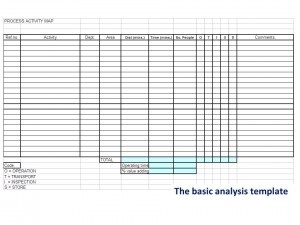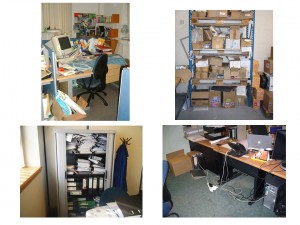Lean in a Hybrid working environment.
Adjusting to changes caused by the pandemic.
Covid-19 and better communications technology have caused changes in working patterns.
These include:
- Large proportions of the population working from home.
- Improvements in home conferencing technology.
- Efficiency improvements enabled by Industry 4.0 technologies such as I.O.T., Robotics, and Digital Printing.
Therefore we need to radically review the way we work and the business systems we deploy.
What is this initiative?
A series of interactive workshops designed for individuals and teams who normally work in office and service environments affected by these changes, who want to gain a better understanding of how adopting Lean methodologies can benefit their customers, organisations, and employees.
Methodology:
Element 1 : Identifying how the world has changed.
The first step is to get the company to start identifying what changes have been forced upon it in the post-Covid world.
Amongst the things we investigate are…
i. As a result of the pandemic has there been a change in customer demands for the products and services we offer?
ii. Have new competitors emerged or is there a move to alternative products?
iii. Could the current service offering be enhanced?
iv. Has anything changed in the supplier base? Has the supply chain evolved in any way?
v. Can the company offer alternative products/services into this changed market?
vi. Has the company the skills and technological capability to compete in this changed market?
The lean office and service effort will focus on the key business processes that directly affect the organization’s ability to deliver value to its customers.
Which brings us to the next stage…
Element 2 : Identifying opportunities for improving things: VALUE STREAM MAPPING.
VSM is a tool to visually show all the actions (both value-added and non-valued-added) currently required to bring a product or service through to the customer.
What is the Goal?
To decrease the proportion of time spent not adding value to the company or to the customer.
How do we start?
- We map the key business processes to identify what happens at each stage and by whom this is done.
- We then identify the factors:
- that cause bottlenecks and delays in the system generating additional costs.
- that may not be the optimal way of doing things.
- that give rise to opportunities for introducing new methods, better ways of communicating and Industry 4.0 techniques.
What techniques are used for mapping?
Two simple but sophisticated techniques are used to analyse the value-streams :
- Process activity mapping.
- Value-Added/Non-value added stream mapping.
What type of processes are examined in this way?
Everything!
For example :
- The design process from concept to product or service launch.
- The customer complaint or return process.
- The commercial transaction process from order capture to cash generation.
- Anything else which involves complex processes and input from people!
Response to this analysis.
Prioritised plans are drawn out for the Short, Medium and Long term for the opportunities identified.
Element 3 : Is your home office organised to cope with the changed world?
The objective of this module is to encourage the use of simple but effective techniques that:
- Improve the efficiency of the home-working operation.
- Make the job (and life) easier!
What do we cover :
1. What does your Office condition and oganisation say about you?
2. World Class Office Standards – A 5S approach to home office organisation.
3. Management of files – physical and electronic.
4. Quick access to information: building efficiency into the way the office is organised.
5. How safe is your Office – have you considered the risks?
6. Visual management systems to prevent errors : what does POKA YOKE mean?
7. Kanban based stock control of office supplies.
Avoiding practices like this :
Click here for a taster of Office 5S
Dr. John R. Thomas Associates will co-ordinate the analysis, action plan development and mentor the team throughout each of these phases.
How do we deliver these tools?
Increasingly, client requirements are for our support courses and mentoring to be delivered as a series of 1 or 2-hour on-line webinars delivered at a time and frequency to suit their convenience.
We believe this to be the most efficient and cost-effective mode of delivering training and support – particularly in these trying times.
After each session, the attendees are required to undertake targeted work-based exercises where they deploy the techniques they have been taught.
In this way companies can:
- Design a unique support programme that meets their exact needs.
- Progress at a pace that suits them and least disrupts their day to day activities.


